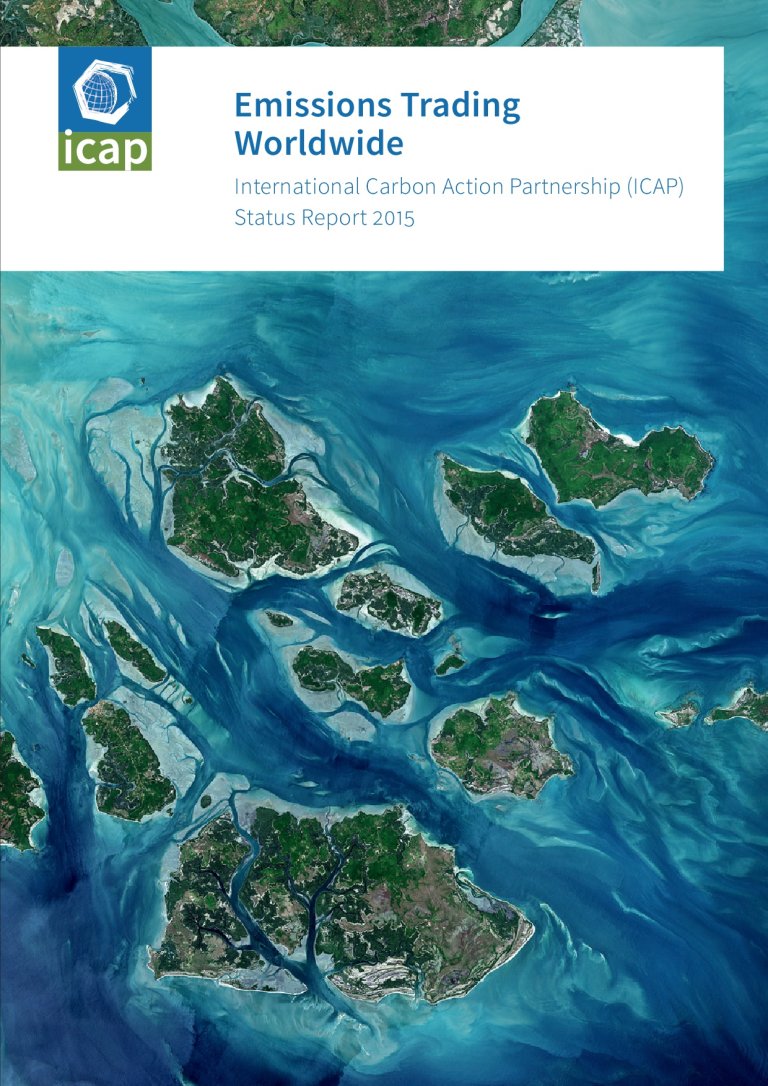Emissions Trading Worldwide: ICAP Status Report 2015


Category
Topics
Release date
Language
The International Carbon Action Partnership’s Status Report 2015 highlights the success of emissions trading.
Here are the takeaway points:
Emissions Trading Sees Rapid Development Worldwide
This year is not only a critical year for global climate change action, with the UNFCCC Conference in Paris in December, but also represents a significant milestone for emissions trading. As of 2015, there are now 17 distinct ETS in force across four continents. Jurisdictions with emissions trading now account for 40% of global GDP.
Asia: The New Hot Spot for Emissions Trading
With nine new ETS launched in the past three years, Asia is establishing itself as the new hub for emissions trading. Not only has the Republic of Korea launched their national ETS in January, but China is also taking bold steps in developing their national carbon market, expected as early as 2016. Following on the footsteps of the joint US-China Climate Change Agreement, this gives fresh impetus to the UNFCCC negotiations on a global climate change accord.
Systems are Maturing and Linking
Current systems are maturing and expanding, playing an ever greater role in the fight against climate change. California and Québec linked their carbon markets in 2014, and with the inclusion of the transport sector in January their linked system became the world’s third largest. The EU ETS has also embarked on a process of structural reform in order to stabilize its carbon market and deliver ambitious emissions reductions.
A Flexible Tool for Policy-Makers
As of 2015, there are systems operating in jurisdictions that vary largely in their geographical scope, economic profile and energy mix. Indeed, when it comes to ETS, there is no one-size-fits-all approach. “This report showcases the great diversity of economic and political contexts in which ETS has been applied,” state ICAP Co-Chairs, Jean-Yves Benoit, head of carbon markets at the Québec Environmental Ministry, and Marc Allessie, head of the Dutch Emissions Authority, “and flexibility is certainly one reason why emissions trading is such an appealing tool for policy-makers”.
Ambitious Climate Action on Multiple Levels
Emissions trading is proliferating worldwide, with action taking place at many different levels, independent of international climate negotiations. The largest system, the EU ETS, covers 31 countries and more than 500 million people. States are also cooperating on climate change action through systems like the Regional Greenhouse Gas Initiative, consisting of nine Northeastern and Mid-Atlantic states. More broadly, the debate on carbon pricing has also been reinvigorated in the United States. With states considering how they will cut emissions under the proposed Federal Clean Power Plan, RGGI and the Californian system are attractive role models. At the same time, the Tokyo cap-and-trade program successfully pioneers the instrument at the city level since 2010. Emissions trading enables smaller states to take action and be at the forefront of climate policy, building momentum for a meaningful global climate agreement from the bottom up.
It Does Not Cost the World to Save the Planet
By putting a price on carbon, ETS incentivizes companies to reduce emissions where it is cheapest to do so. Furthermore, as the systems in North America and Europe showcase, the revenue generated by these systems can be re-invested to ensure emissions are reduced in an ambitious and equitable way.
The growth and diversification of carbon markets is a success story, made possible through the dedication of policy-makers in an ongoing process of dialogue and consultation, to which forums like ICAP make an important contribution.
